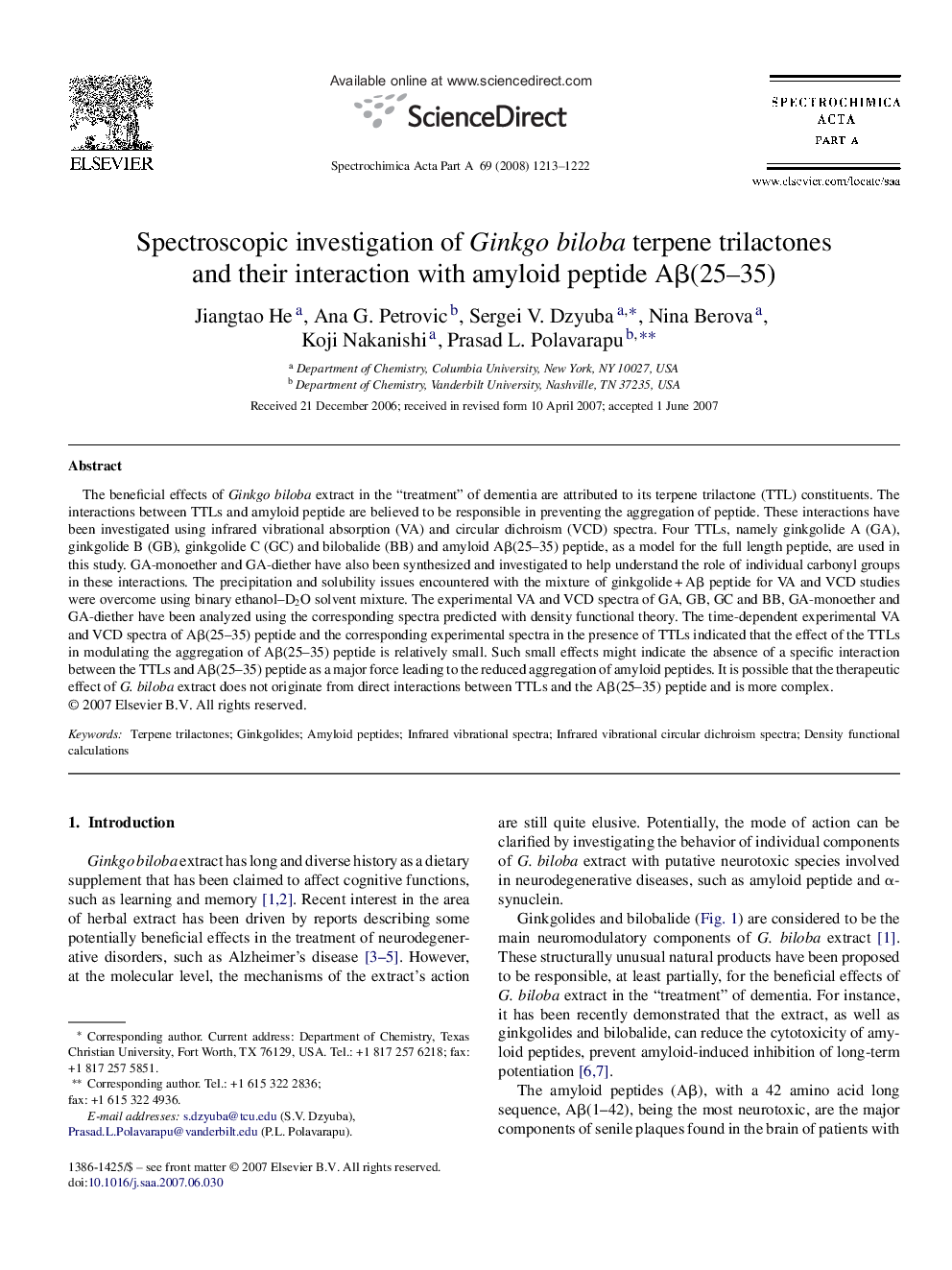| Article ID | Journal | Published Year | Pages | File Type |
|---|---|---|---|---|
| 1237809 | Spectrochimica Acta Part A: Molecular and Biomolecular Spectroscopy | 2008 | 10 Pages |
Abstract
The beneficial effects of Ginkgo biloba extract in the “treatment” of dementia are attributed to its terpene trilactone (TTL) constituents. The interactions between TTLs and amyloid peptide are believed to be responsible in preventing the aggregation of peptide. These interactions have been investigated using infrared vibrational absorption (VA) and circular dichroism (VCD) spectra. Four TTLs, namely ginkgolide A (GA), ginkgolide B (GB), ginkgolide C (GC) and bilobalide (BB) and amyloid Aβ(25-35) peptide, as a model for the full length peptide, are used in this study. GA-monoether and GA-diether have also been synthesized and investigated to help understand the role of individual carbonyl groups in these interactions. The precipitation and solubility issues encountered with the mixture of ginkgolide + Aβ peptide for VA and VCD studies were overcome using binary ethanol-D2O solvent mixture. The experimental VA and VCD spectra of GA, GB, GC and BB, GA-monoether and GA-diether have been analyzed using the corresponding spectra predicted with density functional theory. The time-dependent experimental VA and VCD spectra of Aβ(25-35) peptide and the corresponding experimental spectra in the presence of TTLs indicated that the effect of the TTLs in modulating the aggregation of Aβ(25-35) peptide is relatively small. Such small effects might indicate the absence of a specific interaction between the TTLs and Aβ(25-35) peptide as a major force leading to the reduced aggregation of amyloid peptides. It is possible that the therapeutic effect of G. biloba extract does not originate from direct interactions between TTLs and the Aβ(25-35) peptide and is more complex.
Related Topics
Physical Sciences and Engineering
Chemistry
Analytical Chemistry
Authors
Jiangtao He, Ana G. Petrovic, Sergei V. Dzyuba, Nina Berova, Koji Nakanishi, Prasad L. Polavarapu,
